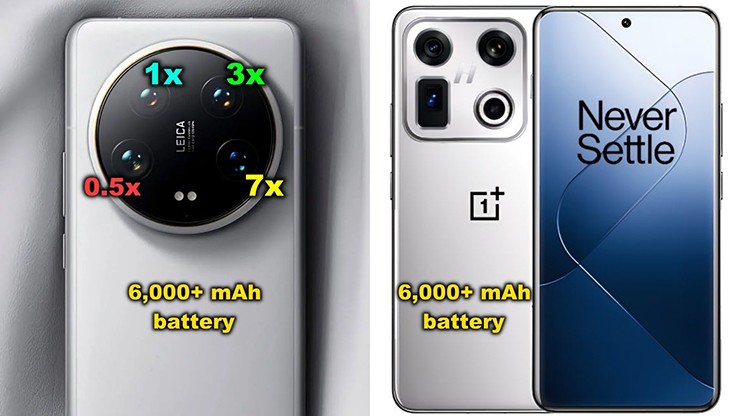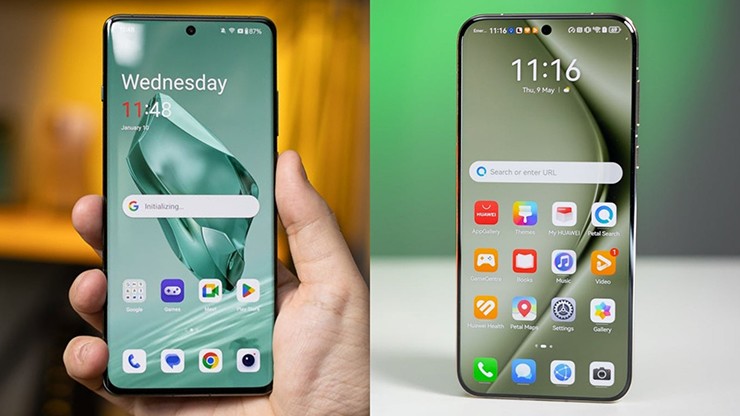A few years after Huawei entered the smartphone market, the Chinese company decided to surprise its competitors.
Despite being years ahead of its rivals at the start, Huawei quickly became a major innovator in areas like smartphone cameras and charging/batteries. However, the US trade ban in 2019 abruptly ended Huawei’s ambitions, at least globally.
Chinese companies are showing innovation that Apple, Samsung and Google fear.
Soon after Huawei’s struggles, other Chinese brands emerged to grab the spotlight, with the likes of Xiaomi, Vivo and OPPO all demonstrating how much they’ve improved. With a similar focus on novel and powerful camera technology, as well as foldable smartphones, Chinese smartphone innovation simply continues to impress.
While it looked like Apple, Samsung, and Google were catching up with Chinese smartphone hardware for a while, 2025 could be the year the iPhone, Galaxy, and Pixel fall a year or two behind once again.
Xiaomi 15 Ultra camera beats iPhone 16 Pro Max and Galaxy S25 Ultra
7x optical zoom could make the Xiaomi 15 Ultra the absolute zoom champion and the best camera phone of 2025. This is completely based on some leaked information surrounding the product.
First, the Xiaomi 15 Ultra - the successor to the Xiaomi 14 Ultra, which was one of the best camera smartphones available today. Reports indicate that the Xiaomi 15 Ultra could be more impressive than its predecessor when it comes to cameras. To do this, Xiaomi is pursuing a new technology that will allow the Xiaomi 15 Ultra to support a flagship 7x periscope zoom and could become the zoom king of 2025.
That's not surprising because even with a 5x optical zoom camera, the Xiaomi 14 Ultra still captures incredible long-range zoom shots thanks to sensor cropping and some magical AI upscaling algorithms.

The photography capabilities of Chinese smartphones are getting more and more impressive.
“The 7x optical zoom on the Xiaomi 15 Ultra will come with a 1-inch main camera with a continuously variable aperture, a 3x zoom camera with impressive macro focusing capabilities, and one of the largest ultra-wide angle sensors on any phone. Of course, there is Leica color correction throughout the device” are the highlights that will come to this smartphone.
OnePlus 13 makes iPhone, Galaxy and Pixel obsolete
Next up is OnePlus, which is expected to launch in late 2024 and globally in 2025. After creating a killer flagship phone in 2024 with a stunning camera, superb battery and charging, and great performance, OnePlus is ready to up the ante globally. It could take the OnePlus 13 to the Android throne with its flagship battery life and outstanding display/glass technology.
There aren't many specifics about the OnePlus 13's camera yet, but it's safe to say it'll be better than the already great OnePlus 12. However, the OnePlus 13 also shares a design with Chinese flagships like the Xiaomi 14 Pro and Huawei P70 Pro, meaning it'll have a four-sided curved glass display, resulting in a sleek design.
It’s interesting to note that OnePlus is one of the few phone makers that doesn’t take inspiration from the iPhone’s design. The four-sided curved glass not only makes the OnePlus 13 look different from its global competitors, but it’s also incredibly comfortable to hold and use.

Being able to use it for 2 days on a single charge is an impressive number for the Xiaomi 15 Ultra and OnePlus 13.
Huge batteries leave iPhone, Galaxy and Pixel far behind in battery life
But the other big upgrade that the OnePlus 13, Xiaomi 15 Ultra, and Oppo Find X8 Ultra are expected to bring is a 6,000 mAh battery. This would be the first time in the world that a global flagship smartphone can last for 2 days on a single charge - which is crazy.
It’s unclear whether these phones will use new battery technology or simply take advantage of the extra space they have. Either way, these massive batteries + super-fast charging (up to 100W) will make them battery monsters, and that will leave the iPhone, Galaxy, and Pixel far behind.
While not the focus of this topic, it is worth noting that Chinese foldable smartphones in 2025 will most likely maintain and extend their lead in hardware innovation over Samsung and Google.


